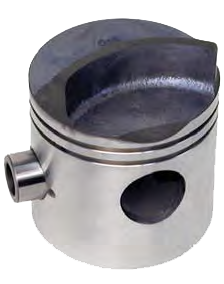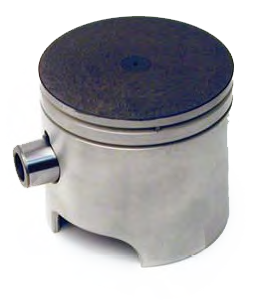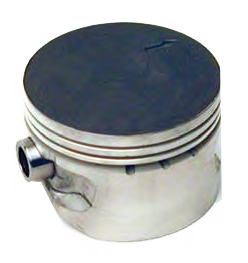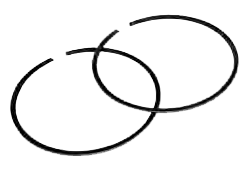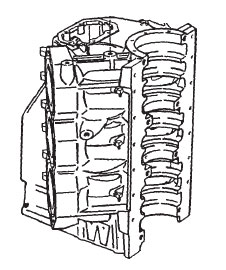
What kind of piston does my outboard motor have?
There are four basic piston designs used in outboard engines.
DFI
used in Mercury / Mariner / Force
Crossflow
used in Johnson / Evinrude / Mercury / Mariner / Force
Loopcharged
used in Johnson / Evinrude / Mercury / Mariner / Force / Yamaha
Four-Stroke
used in Johnson / Evinrude / Mercury / Mariner / Force / Suzuki / Yamaha / Honda
The innovative optimax direct injection delivers the ultimate in efficiency. The dome shaped piston head directs the air-fuel charge to the spark plugs more efficiently providing outstanding running quality along with excellent reliability. Thanks to the two stage direct injection technology it supplies a constant mix of atomized fuel and air to the spark plug thereby lowering emissions and enhancing fuel economy. The DFI can be Identified by splash well on top of piston. The oldest design, and the one used on all Johnson / Evinrude engines until 1968, and Mercury / Mariner / Force 35-150 HP engines from 1970-1990, is the crossflow piston. As the air / fuel mixture travels through the transfer port and into the cylinder, a deflector, cast into the top of the piston, directs the air / fuel mixture towards the combustion chamber and spark plug tip for maximum efficiency. All engines with deflectors on top of the pistons will be crossflow engines. External inspection of a crossflow engine will reveal removeable transfer port covers on the side of the cylinders. In 1968 Johnson / Evinrude introduced an outboard engine with loopcharged pistons. This engine was the 55 HP 3-Cylinder. In 1976 Mercury / Mariner / Force introduced V6 engines with looper pistons. This engine was the 175 HP V6. Yamaha used this piston design on all of it's 2 cycle engines. A loopcharged engine has a transfer port cast into the cylinder wall in such a way that it will direct the air / fuel mixture towards the combustion chamber and spark plug tip without the need for a piston deflector. All engines with a flat top or a slight dome on the top of the pistons will be loopcharged. Loopcharged engines will not have removable transfer port covers on the side of the cylinders. Four-stroke / four-cycle engines have oil stored in the crankcase of these engines is splashed onto the cylinder walls for piston and ring lubrication.The pistons are equipped with oil control rings to scrap excess oil off of the cylinder walls. Four-stroke / fourcycle pistons are easily identified by a three piece oil control ring in the bottom ring position. The pistons almost always have a flat top or a dished top and never have needle bearings between the wrist pin and connecting rod (like two-stroke engines). Piston with Dome Top
and Splash Well
Piston with Deflector Top
Piston with Flat Top
Piston with Flat Top and Oil-Ring in the Bottom Position
Standard Ring Set
Removable Transfer Port Cover
Non-Removable Transfer Port Cover
3 Rings with Oil Control Ring in Bottom Position

